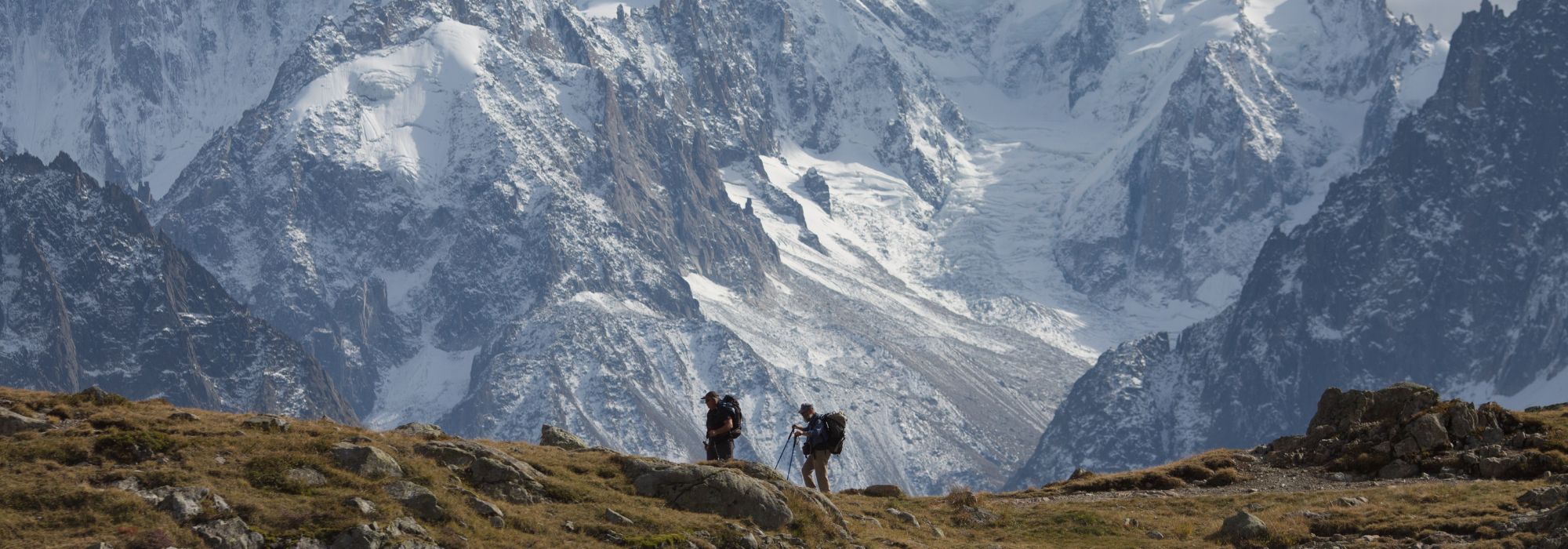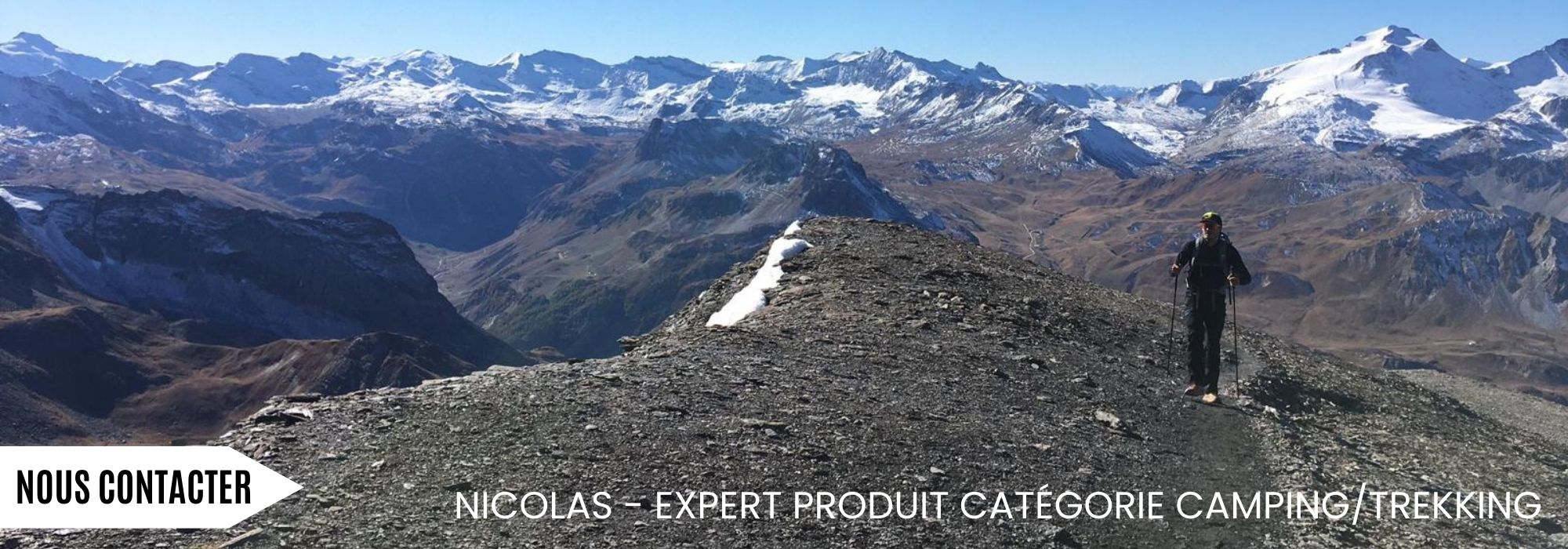What are the advantages of using hiking poles?
Hiking poles are a classic piece of equipment, but they're essential for good hiking. Often sold in pairs, they improve your stability and take a lot of pressure off your knees. Poles are available with or without adjustable length, or with springs to absorb even more shock. Using poles has many advantages: it'll ensure better performance and take the strain off your joints.
Technical advantages:
Hiking poles double your support on the ground. You'll have four supports. This gives you optimum balance and stability. The risk of falling and injuring yourself is much lower.
Physical benefits:
Hiking poles take a great deal of pressure off your body, because they exert less pressure on your lower limbs. This accessory will ensure that your hiking outings are far less traumatic for your joints, and will limit your joint pain. They distribute weight evenly, so you'll be relieved on both ascents and descents. Poles give you unrivalled comfort during your outings in the mountains.
What's more, poles help you improve your physical performance. You can increase your walking pace without tiring yourself out. So you're more efficient and perform better, while reducing muscle fatigue.
Now that we've covered the benefits of using trekking poles during your hikes, let's move on to the technical features, so you can choose poles that are perfectly suited to your needs.
THE PRODUCT EXPERT'S ADVICE:
 |
When hiking, adjusting the size of your poles is very important. This will help you feel more comfortable and secure your footing. When you start climbing, you need to shorten your poles slightly. Conversely, when you start the descent, it's advisable to lengthen them. Malaurie - Product expert for the hiking / trekking world About Malaurie "I'm a great sports enthusiast of all kinds, and I lead a two-hundredths life at a time when weekends rhyme with outdoor activities". |
How many strands are there on a hiking pole?
The number of strands corresponds to the number of sections on the pole. There are two types of pole: single-stranded and multi-stranded. Each has different characteristics.
Single-core sticks are lighter and less resistant over the long term, as they are made from a single block and therefore have no tension zones.
On the other hand, multi-strand hiking poles can retract or bend, depending on the technology used. The main advantage of this accessory is that it can be attached to your backpack when you no longer need it. When folded, they reduce in size by 2 to 4 times. For many hikers, it's important to be able to store their poles without taking up too much space.
What are the different locking and adjustment systems?
There are 3 different locking and adjustment systems for multi-pole hiking poles:
The first is the screw lock found on telescopic poles. This system allows you to adjust the height of your pole from one strand to the next. Once you've found the size that's right for you, all you have to do is secure your settings with the screws at the clamping points. However, this type of pole is best suited to occasional hiking on affordable terrain. Indeed, it's possible for them to go out of adjustment as your outings progress.
Secondly, there's the clip-on system, which is more suited to regular, intensive hiking. It's quick and easy to change size settings, or to fold them away for storage, thanks to locking clips. They are highly recommended for routes where support is very important.
Last but not least, there's the Z-folding system, found on three-piece poles. The different sections are linked by a wire that runs through the entire tube. To lock or unlock. Simply use the small push-button on the handle. This type of pole is highly recommended for hikers looking for lightweight equipment that can be set up very quickly. 
How to choose the right size for your hiking poles?
It's vital to choose the right size for your hiking poles. If they don't fit you perfectly, the benefits won't be optimal.
First of all, for single-strand or non-adjustable Z poles, it's important to choose the right size to reap the benefits. To find your perfect size, simply multiply your height in centimetres by 0.68.
What's more, size guides are often available to help you find the perfect pair.
As for telescopic poles, they can be adjusted in height by around 20cm. This allows you to be at ease on changing terrain.
DID YOU KNOW?
 |
If you choose poles with a single shaft, and you don't have the means to calculate the ideal size. Simply stand up straight, take the sticks in your hand and check whether your elbow forms a right angle with your forearm. Depending on the result, you'll simply have to go one size up or down and repeat the same technique until you find one that fits you perfectly. |
What are the different pole materials?
Materials:
First, there are aluminum poles. Weight is one of the main differences with carbon. Indeed, they are slightly heavier, around 500 to 600 grams per pair. What's more, aluminum is a material that absorbs shocks, vibrations etc. less well. But the great advantage of this material is that it is very robust and difficult to bend.
Then there are carbon poles, which are much lighter. A pair weighs between 350 and 500 grams. In addition to this advantage, carbon absorbs shocks and reduces vibrations. However, this material is much more fragile, so the pole is less resistant. It's important to bear this in mind when setting out on technical hikes, or if the distance is long.
Tips and ferrules:
There are two types of parts in direct contact with the ground: tips and ferrules. These are parts of the pole that you should never neglect. In fact, they'll give you a better grip on the ground.
Two types of tip are available on the market: steel and carbon. Steel tips are better suited to occasional hikers, as they are less robust over time.
On the other hand, for more intense use, carbon nails are recommended. They are more technical, offer optimum grip and are more durable over time.
As for the tips, they are made of rubber and applied directly to the nails. This accessory serves two purposes: firstly, it prevents you from damaging your clothes when the poles are stored in your rucksack, and secondly, it reduces the risk of injury.
Tips are mandatory on certain trails, as spikes can cause serious damage to biodiversity. What's more, they also provide excellent comfort when out on hard terrain.
Handles:
There are three categories of handles. These are very important, as they provide good support and different levels of comfort.
Firstly, there's the Foam grip, which is very comfortable because it's particularly soft to the touch and absorbs perspiration. So your hands stay dry throughout your hike. However, foam is slightly less resistant. This type of handle is recommended for long-distance outings.
The second type of handle is cork. This material has excellent moisture wicking properties. This handle has the advantage of adapting perfectly to the shape of your hands for optimum comfort. And last but not least, cork is a vibration-absorbing material.
Finally, there are rubber grips, which are highly insulating against the cold and absorb vibrations and shocks. However, these handles do not regulate humidity, so in summer your hands will be more likely to slip and they will be damaged more quickly. It is therefore advisable to opt for these grips in winter.
TO REMEMBER :
- CHOOSE THE NUMBER OF POLES TO SUIT YOUR HIKING NEEDS
- AVOID STICKS THAT ARE TOO BULKY
- CHOOSE THE RIGHT SIZE FOR COMFORT AND PERFORMANCE
- USE HANDLES ADAPTED TO YOUR OUTINGS























































